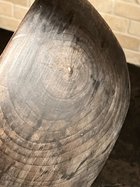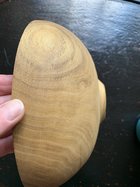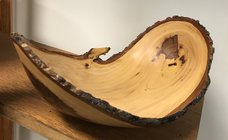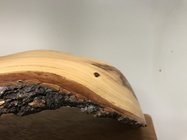Since staring lathe turning in October last year, I’ve been experimenting on drying the green wood turned bowls (bowls that were learning curve bowls)
These are bowls that has part of the pith included many times as the one shown below. (Ash)
I’m not really interested in second turning and am okay with bowls slightly moving to their final state on their own.
What I’ve been doing is not drying at all in shavings or anything else. I’ve been turning the bowls to the thickness I want (not real thin or anything), pouring white vinegar over them, letting them drying for up to a week or less, then sanding.
I’ve had hardly any crack.
I’ve tried the vinegar because after ebonizing some, noticed the same thing.
You can see the bowl below isn’t overly thin. It has some of the torn up pith area on the left side I left and just sanded as it’s part of that ash we cut down and I’m okay with that wood look for personal use.
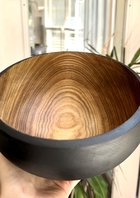
These are bowls that has part of the pith included many times as the one shown below. (Ash)
I’m not really interested in second turning and am okay with bowls slightly moving to their final state on their own.
What I’ve been doing is not drying at all in shavings or anything else. I’ve been turning the bowls to the thickness I want (not real thin or anything), pouring white vinegar over them, letting them drying for up to a week or less, then sanding.
I’ve had hardly any crack.
I’ve tried the vinegar because after ebonizing some, noticed the same thing.
You can see the bowl below isn’t overly thin. It has some of the torn up pith area on the left side I left and just sanded as it’s part of that ash we cut down and I’m okay with that wood look for personal use.


